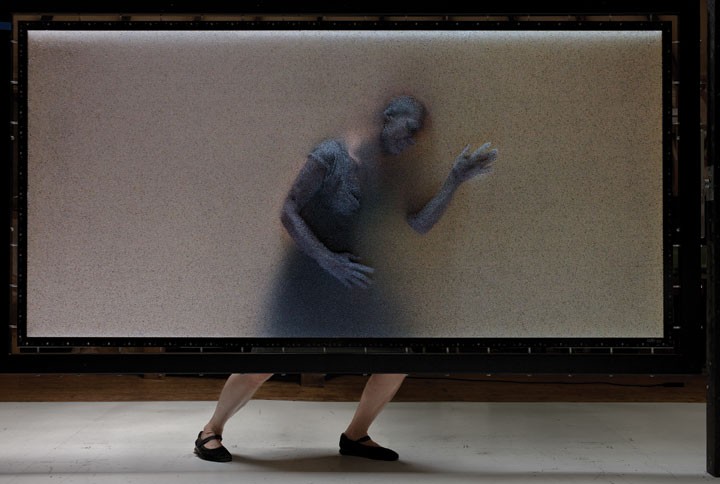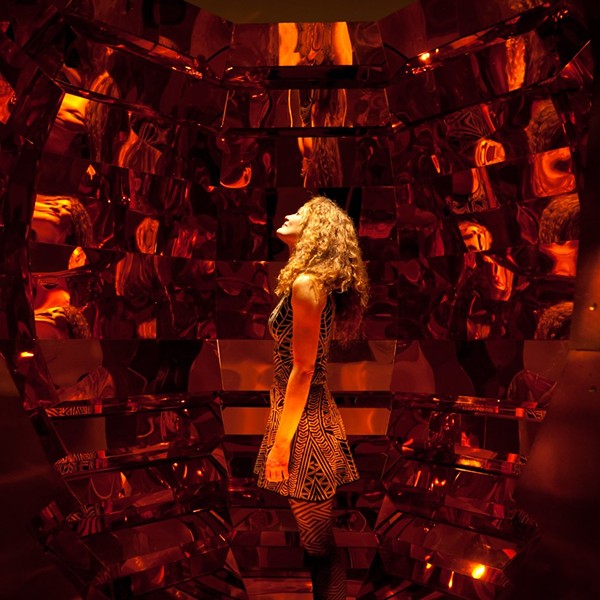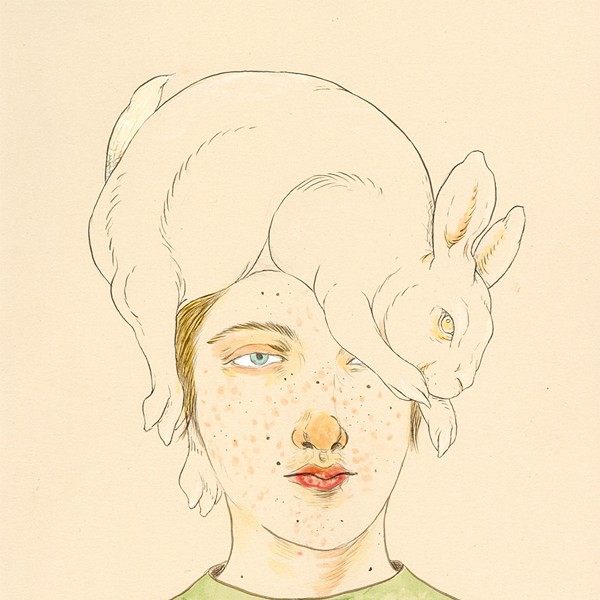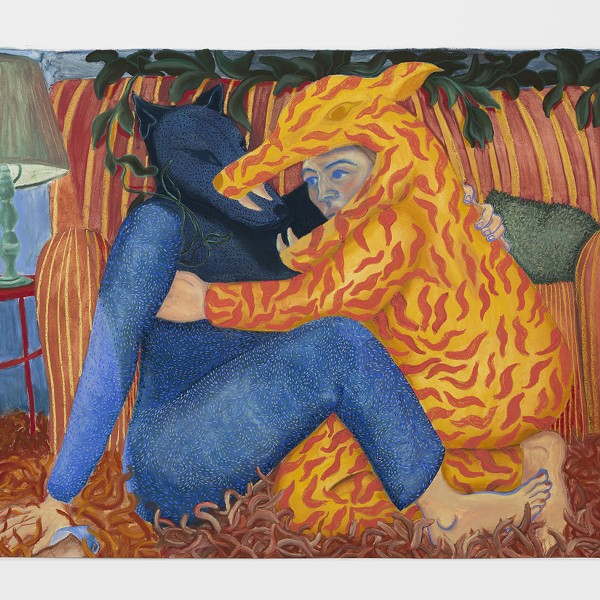"The Liminal Portrait" and "Drag Queen" at the Davis Orton Gallery
Hide and Seek
[]
The Davis Orton Gallery’s two-person exhibition of photographs by Richard Edelman and Keiko Hiromi is an engaging and compact study of concealment. In turns theatrical and confrontational, the photographs in the exhibition suggest concealment is just a vehicle for unconcealing oneself, as photographer and as subject. Each photographer’s work offers a view on that conceit and does an admirable job of showing us what each project—and contemporary photography in general—is all about.
As you walk into the comfortable gallery space in Hudson, first up is a series of photographs by Richard Edelman titled “The Liminal Portrait.” A former faculty member at the New School and a long-time photographer of urban, architectural spaces, a post-’80s Eugene Atget trawling New York’s concrete and social detritus, Edelman recently turned to portraiture. But he did so while holding firm to his familiar roots in photography. In short: His portraiture has the backdrop of architectural spaces; strong, lithe forms jut in and out of large hand-built polymer pin screens that function as rectangles of stretched canvas or pliable plaster.
Edelman’s work manages to shy away from the exuberant theatricality of the Baroque; his near-geometric compositions and deft touch (digitally touched!) makes the work lyrical. Bodies first look as if struck by light within paintings and, through the custom pin screens built by Edelman’s collaborator Ward Fleming, materialize with gusto in and out of the polymer curtain like Greek bas-reliefs. It is in the ways that the subjects in Edelman’s photographs confrontationally unconceal themselves (reveal is too strong a word here) that their concealment is made apparent.
And then you walk into the other half of the gallery, where Keiko Hiromi’s work, “Drag Queen,” presents itself. You might note that there’s a touch of Walker Evans and Diane Arbus in it. The work, photographs taken in 2007 and 2011 of drag queens whose job it is to reveal themselves by concealing sexual facts about themselves, is mostly composed of tightly cropped portraits of performers at the Jacques Cabaret in Boston. The earlier work seems distant while the 2011 color pieces announce themselves. Hiromi’s approach to her work and her subjects plays on concealment through her moves from anthropological documentarian to admitted participant. She reveals herself in her photographs of her subjects.
Hiromi’s earlier black and white photographs shot in 2007 suggest she was taken by the documentary ethic of mid-twentieth-century street photographers: hiding beyond sight, a neutral observer. Hiromi’s later, vibrant color photos frame her turn as an actor in the behind-the-scenes and on-site theatrics of her subjects. Her transition from neutrality and concealment to a more performative photography mirrors the made-up gendered transitions of her subjects.
When you’ve taken in Edelman’s and Hiromi’s work, do spend some time with the self-portrait portfolios of Moira Barrett and Michael Darough. Their work, as different as can be— the former about turning 60, the latter ostensibly about imagined doubles—nevertheless coheres as a meditation about what we all want, fail to want, and fail to be.
You could turn all these works into a sociological critique of our post/current Great Recession days. We are all concealing ourselves behind some excuse, some fear, some fact. Or not. But when you go see the work, do look at it for a good long while, for I’ve left a lot about this work concealed, hidden from your eyes. Watch as it unfolds itself over you and, in so revealing itself, charms you.
“The Liminal Portrait” by Richard Edelman and “Drag Queen” by Keiko Hiromi will be exhibited at Davis Orton Gallery in Hudson through May 13. (518) 697-0266; Davisortongallery.com.

















